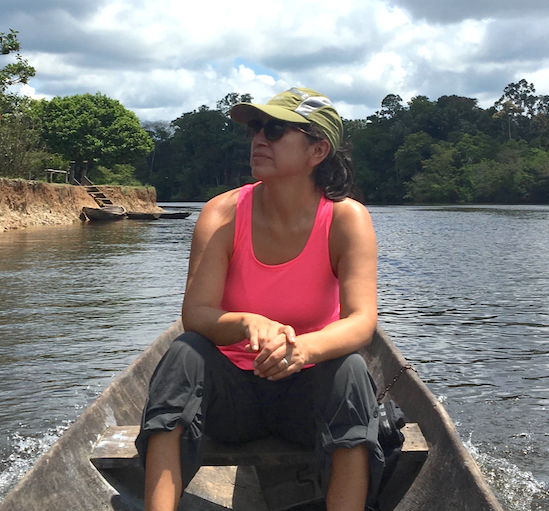STEM Shoutout: Dr. Rosa Vallejos
UNM linguist utilizes multiple grants for Amazonia research
UNM associate professor of linguistics Dr. Rosa Vallejos was recently funded by the National Science Foundation/ National Endowment for the Humanities for her grammatical research of Secoya (sey), an Amazonian language.
Linguistic research has found that human languages have dedicated mechanisms of specifying information about shape, animacy, consistency, size, location, or utility of things around us. Secoya, an endangered Tukanoan language of Peruvian Amazonia, has a complex noun classification system, and from a theoretical perspective is an excellent language to test current typologies of noun classification.
“An important question in linguistics is to what extent the nominal classification system of a language mirrors the way speakers see the world they live in, and to what extent the documented similarities reflect underlying, general cognitive processes in the human mind,” Vallejos said.
The second half of the study focuses on complex predicates, clause chaining, and serial verb constructions to seek out potential correlations between multi-verb constructions, subordination, and the stratification of information.
According to Vallejos, “Secoya can allow to test the hypothesis that a difference in syntactic form always spells a difference in meaning. The idea is that different constructions can receive subtle systematic differences in interpretation. This project addresses this hypothesis, and by doing so contributes to our understanding of the pragmatic side of subordination.”
Vallejos co-organized a conference in Lyon, France April 2019 on the topic of this project, noun categorization among the Secoya people. Data from the project will be made available to a broader audience through digital archives.
“In addition to advancing linguistic theory, the study of indigenous languages is important for the communities that speak those languages. Indigenous languages are disappearingat an alarming rate. Amazonian languages in particular have been identified as a priority in this respect, since they are both poorly documented and highly endangered. Outcomes of a project like mine can support initiatives being advanced by community members to preserve their heritage language, to create basic resources for primary education, and to develop literacy in the community,” Vallejos said.
Vallejos says the application of linguistic research to real-world issue continues to be the motivation for her studies.
“I hope to inspire others to engage in this type of work now in my role as a professor of linguistics at the University of New Mexico,” Vallejos said.
To learn more about Vallejos’ research, visit her website.

